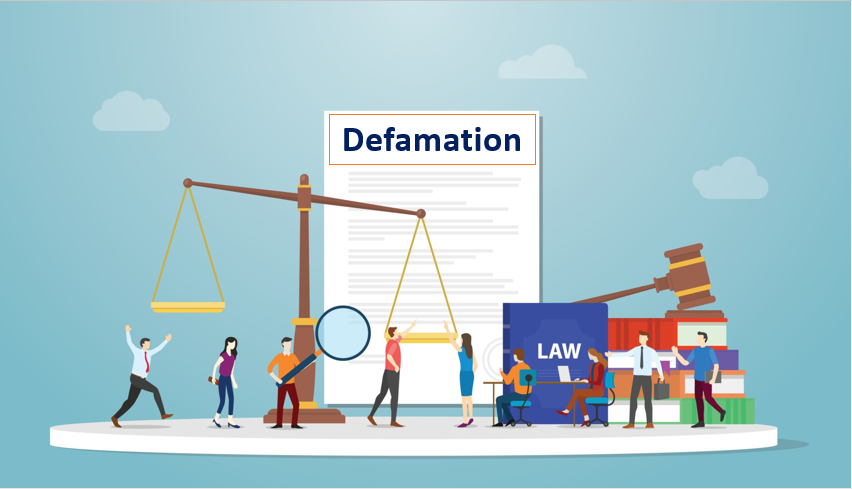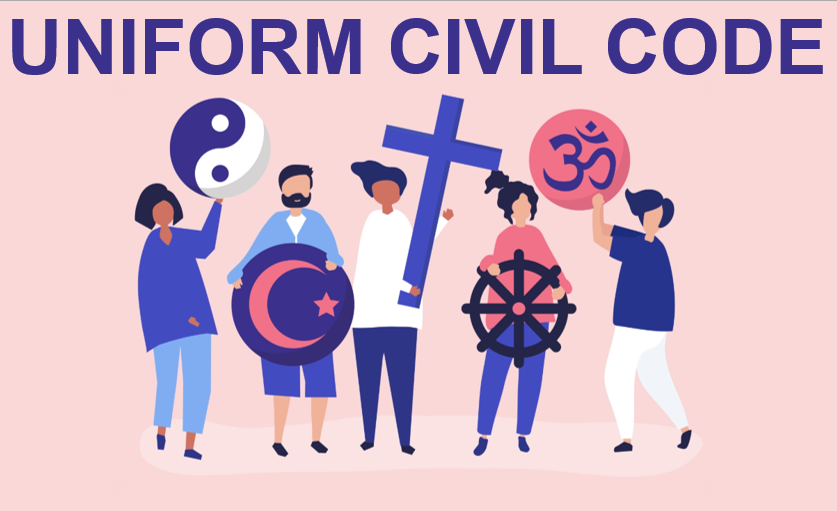Published on 10th March 2025
Authored By: Sahasra Reddy
IFHE Hyderabad
INTRODUCTION
The Bharatiya Nyaya Sanhita (BNS) represents a significant evolution in India’s legal framework, particularly concerning punitive measures. Enacted in 2023, the BNS introduces a comprehensive approach to justice that emphasizes rehabilitation over retribution. This shift is encapsulated in the introduction of six distinct types of punishments, including community service, which marks a departure from the traditional punitive measures previously outlined in the Indian Penal Code (IPC). By examining the historical context and various forms of punishment under the BNS, this article seeks to decode the underlying principles of justice that guide these new mechanisms. The BNS not only reflects modern legal trends but also aims to foster societal reintegration and reduce recidivism rates, thereby enhancing the overall efficacy of the Indian justice system.
Key words: Bharatiya Nyaya Sanhita, 2023 (BNS), Bharatiya Nagarik Suraksha Sanhita, 2023 (BNSS), Indian Penal code, 1860 (IPC).
HISTORY
The Bharatiya Nyaya Sanhita (BNS) marks a pivotal shift in India’s legal landscape, reflecting a historical evolution from the colonial-era Indian Penal Code (IPC) established in 1860. The IPC has been criticized for its rigid punitive measures and lack of rehabilitative focus, leading to calls for reform as societal attitudes towards justice evolved. Recognizing the need for a more humane and effective legal framework, the BNS was enacted in 2023, introducing a comprehensive approach that prioritizes rehabilitation over retribution.
The BNS outlines six distinct types of punishments: death sentence, life imprisonment, imprisonment (both simple and rigorous), forfeiture of property, fines, and community service. Notably, the BNS eliminates the death penalty as a sole punishment for any offense, reflecting a significant departure from the IPC’s provisions. The introduction of community service as a formal punishment signifies a groundbreaking shift towards restorative justice, emphasizing societal reintegration and personal accountability. This historical context highlights the BNS’s alignment with global trends favouring rehabilitative justice systems. By addressing the root causes of criminal behaviour—such as poverty and lack of education— the BNS aims to reduce recidivism rates while fostering a more equitable legal environment. This innovative approach not only modernizes India’s punitive framework but also sets the stage for a more compassionate and effective justice system.
TYPES OF PUNISHMENTS (sec 4-13)
Sec 4 of BNS – SIX kinds of Punishments
- Death Sentence
- Life Imprisonment
- Imprisonment- → Simple Imprisonment, Rigorous Imprisonment
- Forfeiture of Property
- Fine
- Community service.
NO offence gives only Death Penalty as Punishment. Before it was there in IPC. Now it’s removed in BNS.
DEATH SENTENCE
It is the most severe form of punishment and its also known as capital punishment. This punishment is carried out only in the rarest of the rare cases. In the present BNS, 2023 the offences punishable by this punishment have increased in number. India is one of the countries which did not abolish this punishment. The life imprisonment is the rule while the death penalty is the exception.
LIFE IMPRISONMENT
→This punishment states that whatever remaining life of the person should be spent in prison.
→ No specific number of years are mentioned for this punishment in statute nor case laws.
Meaning of imprisonment for life
→ In the case of Sangeet v. State of Haryana, (2013) 2 SCC 452 → Justice k & Radhakrishnan & Madan B. Lokur stated that –
→”A convict undergoing life imprisonment is expected to remain in custody till the end of his life, subject to any remission granted by the appropriate govt”.
FOR RECKONING OF IMPRISONMENT FOR LIFE
In few offences the convicted was punished with 1/2 of LI in such cases the Section 6 of the BNS is used to determine the duration of the punishment.
→ Sec 6 of BNS
→Fraction of terms of punishment
→Equivalent to imprisonment for 20 – only for the calculation for such offences. Then we calculate 1/2 of it.
→Sec 5 of BNS- Commutation of sentence.
Appropriate govt allows for the commutation of the sentence it is of 2 types and they are as follows –
- Central Government
- An offense against any law relating to a matter to which the executive power of the Union extends.
- Various laws and present Laws enacted by central Govt. If offence committed right now the central govt reduce the sentence.
- State Government
- An offence against any law relating to a matter to which the executive power of the state extends.
- In cases relating to the normal laws or any law enacted by State Govt is the Appropriate govt.
IMPRISONMENT
Sec 4 BNS -Imprisonment, which is of two types
- Rigorous, that is, with hard labour. Here the convict has to do mandatory labour.
→ Ex – Robbery, Theft.
- Simple – It is merely imprisonment for a set amount of time. It’s the discretion of person to do hard labour. Can or can’t do the convict/person has a choice.
FORFEITURE OF PROPERTY
→ This punishment takes away the rights of the property. Ownership rights are also taken away.
→ It acts as a deterrent effect.
Few offences under which this punishment is imposed in BNS :
- Sec 155 of BNS – Receiving property taken by war by depredation mentioned in sec’s 153 and 154.
- Sec 169 of BNS – Public servant unlawfully buying or bidding for property.
SENTENCE OF FINE
An Amount of money that has to be paid as a Punishment.
→ It has a correctional effect and it is based on Reformative Theory.
– In some offences the fine has been specified while in some others the fine has not been specified.
Sec 8 of BNS prescribes the amount of fine if the amount is not specified. It states that –
Where no sum is expressed extend, to which a fine may extend, the amount of fine to which the offender is liable is unlimited, but shall not be excessive. It should be subject to their jurisdiction.
Ex-Like Judicial Magistrate second Class they can impose only Rs10,000.
NON-PAYMENT OF FINE
In the case where the convicted is unable to pay the fine he/she is punished with imprisonment. Sentence of imprisonment for non- payment of fine is prescribed in Sec 8 (2) BNS.
→Scale of Imprisonment is prescribed in Sec 8(5) BNS
- 2 months – not exceeding Rs5000
- 4 months – not exceeding Rs10,000
- One year for any other case exceeding Rs10,000
→ Imprisonment to terminate on payment of fine – Sec 8(6) BNS
- If the payment is done partially the imprisonment is reduced.
- Termination of imprisonment happens on payment of fine.
- If both imprisonment and fine given. Then if fine can’t paid then 1/4 of imprisonment is prescribed. Ex-2yrs 6 months
COMMUNITY SERVICE
It is the new and the sixth punishment introduced by the BNS, 2023. It is an important addition as it marks the start of the era of restorative justice and rehabilitation. This punishment is based on the Reformative theory. It is mentioned in Sec 4 (f) of the BNS, 2023.
This punishment means to service the society by doing something.
Section 23 BNSS- Explanation
Community service shall mean the work which the Court may order a convict to perform as a form of punishment that benefits the community, for which he shall not be entitled to any remuneration.
This punishment is mostly given for small offences and imposing this punishment benefits the society.
→Few offences under which community services is imposed as punishment.
- Sec 202- Public servant unlawfully engaging in trade
- Sec209 Non-appearance is response to a proclamation under sec 84 of BNSS, 2023 Sec 226 – Attempt to commit suicide to compel or restrain exercise of lawful power.
- Sec 303(2) proviso: – Theft where the Value of the stolen property is less than five thousand rupees & a person is convicted for the first time & returns or restores the value of property.
- Sec 355 :- Misconduct in public by a drunken person.
- Sec 356 (2):-Defamation
COMPARATIVE LEGAL ANALYSIS
|
IPC Approach |
BNS Approach |
|
Punitive |
Rehabilitative |
|
Retributive |
Restorative |
|
Rigid |
Flexible |
|
Colonial-era framework |
Modern, adaptive framework |
INNOVATIVE ASPECTS
The following are the innovative aspects:
- Introduction of Community Service – The Bharatiya Nyaya Sanhita (BNS) introduces community service as a formal punishment for the first time in India, moving away from traditional punitive measures like imprisonment and fines. This innovative approach emphasizes restorative justice, focusing on repairing harm caused by criminal behaviour rather than merely punishing offenders. By incorporating community service, the BNS aligns with global trends prioritizing rehabilitation and societal reintegration.
- Flexible Sentencing Options – The BNS allows courts to impose tailored sentences based on the nature and severity of offenses, departing from a rigid one-size-fits-all model. This flexibility enables judges to exercise discretion in determining the appropriateness of community service, fostering a more nuanced understanding of justice. Individualized sentencing promotes fairness and proportionality, ensuring that punishments reflect the specific circumstances of each case.
- Emphasis on Rehabilitation – A central tenet of the BNS is its focus on rehabilitation over retribution. By prioritizing community service, offenders can contribute positively to their communities while serving their sentences. This rehabilitative approach aims to address underlying issues contributing to criminal behaviour, ultimately reducing recidivism rates. Additionally, community service offers offenders opportunities to develop new skills and gain practical experience, enhancing their chances of successful reintegration into society.
- Societal Integration – The introduction of community service fosters greater engagement between offenders and their communities, helping rebuild trust and promote social cohesion. Offenders involved in community service develop accountability and responsibility towards societal welfare. By participating in community-focused activities, the BNS addresses root causes of crime, such as poverty and lack of education, thereby promoting long-term societal benefits.
- Enhanced Victim Consideration – Community service as a punishment enables offenders to make amends for their actions by positively contributing to their communities, providing a sense of closure for victims and restoring harmony within affected areas. This victim-centric approach acknowledges that crimes impact not only offenders but also victims and communities, promoting a holistic view of justice that considers all stakeholders involved in the process.
- Legal Framework Modernization – The BNS modernizes India’s legal framework by aligning it with international practices favouring rehabilitative approaches over punitive ones. The introduction of community service helps alleviate prison overcrowding by providing alternatives to incarceration for minor offenses. This shift allows the legal system to allocate resources more effectively, focusing on serious crimes while promoting constructive engagement for less severe offenses.
LEGAL AND SOCIETAL IMPACT
The minor changes in the five punishments and the addition/introduction of the six punishment “Community Service” by the BNS, 2023 has had a legal and societal impact as it marks the shift from the traditional punitive measures to a new era of rehabilitation and restorative justice. This punishment allows the offenders to have personal skill development and growth which helps them enhance their employability making it less likely for them to commit an offence again. Hence it helps in reducing the recidivism rates. By allowing offenders to contribute positively to their communities, this approach helps rebuild trust and fosters a sense of communal harmony. Community service can help address underlying issues that contribute to criminal behaviour, such as lack of education or employment opportunities. By engaging in meaningful work, offenders can break the cycle of crime and poverty. The BNS allows for tailored responses to offenses based on their nature and severity, promoting fairness and proportionality in sentencing. This flexibility enhances the legal system’s ability to address individual circumstances effectively.
CONCLUSION
The Bharatiya Nyaya Sanhita signifies a transformative evolution in India’s approach to justice, moving towards a more rehabilitative and restorative model. By introducing community service as a formal punishment and allowing for flexible sentencing options, the BNS addresses individual circumstances while promoting societal reintegration. This shift not only modernizes India’s legal framework but also aligns it with international practices that prioritize rehabilitation over mere punishment.
Despite its progressive intentions, the BNS is not without challenges. The ambiguity surrounding community service implementation raises concerns about equitable application and effectiveness. Critics point out that without clear guidelines and oversight mechanisms, there is a risk of arbitrary enforcement that could undermine the system’s integrity. Furthermore, potential disparities in socioeconomic status may influence sentencing outcomes, leading to questions about fairness and justice.
The impact of the BNS on the legal system is profound; it fosters accountability among offenders while rebuilding trust within communities. As offenders engage in meaningful community work, they have opportunities for personal growth and skill development, which can significantly reduce recidivism rates. The emphasis on restorative justice acknowledges the interconnectedness of offenders, victims, and society at large, promoting a holistic view of justice that benefits all stakeholders involved.
As the BNS continues to be implemented, its relevance in shaping a more just and equitable society will be crucial. The ongoing evolution of India’s legal landscape underscores the importance of adapting to contemporary understandings of justice while addressing potential shortcomings in practice. Balancing the benefits and drawbacks of these new punitive measures will be essential for realizing the full potential of the BNS in creating an effective criminal justice system that meets the needs of all citizens.
REFERENCES
- Raj, A.M.& Y. (2024) Community service: A progressive shift introduced by Bharatiya Nyaya Sanhita, Live Law. Available at: https://www.livelaw.in/lawschool/articles/community-service-bharatiya-nyayasanhita-indian-penal-code-juvenile-justice-act-national-crime-records-bureau260813?utm_source=perplexity (Accessed: 15 January 2025).
- (No date) A critical analysis of punishment scheme in … Available at: https://www.jetir.org/papers/JETIR2409534.pdf (Accessed: 17 January 2025).
- Exploring India’s new criminal laws: A paradigm shift in legal framework (no date) MyGov Blogs. Available at: https://blog.mygov.in/exploring-indias-new-criminal-lawsa-paradigm-shift-in-legal-framework/ (Accessed: 18 January 2025).
- Bharatiya Nyaya Sanhita, 2023.
- Bharatiya Nagarik Suraksha Sanhita, 2023.


